Dies ist eine alte Version des Dokuments!
Agathosma betulina (P.J. Bergius) Pillans - syn. Barosma betulina (Bert. and Weidl.); Diosma betulinum Thunb. - Rutaceae
honey buchu, mountain buch, round leaf buchu, (short) buchu, Buchu, Birkenähnliche Duftraute, Bucco, Buccostrauch
Perennial herb or shrub, up to 2m heigh, native to South Africa (mountains of th Western Cap Province); leaves obovate, tips curved backwards; flowers solitary in leaf axil, small, white to purplish; fruit a five-parted capsule.
„The essential oils and extracts of the leaves are used as flavoring for teas, candy, and a liquor known as buchu brandy in South Africa. The two primary chemical constituents of the oils of A. betulina are isomenthone and diosphenol. The extract is said to taste like blackcurrant.“
http://en.wikipedia.org/wiki/Agathosma_betulina
GC and GC-O analysis of 16 black currant juice samples showed that several commercially available products contained Buchu oil to improve aroma, without any such indication on the label. Buchu oil is used because its constituent 8‐mercapto‐p‐menthan‐3‐one has a catty odour that is similar to the catty odour of black currants. As retention times of the two odours are different, sniffing the effluents of the gas chromatographic column is a way to detect the addition of Buchu oil.
[Nijssen, L. M., and H. Maarse. „Volatile compounds in black currant products: An additional factor in authenticity control of fruit juices.“ Flavour and Fragrance Journal 1.4‐5 (1986): 143-148]
„(+)-Limonene (about 10 %), (+)-menthone and (-)-isomenthone (both together about 40%) and the laevorotatory (S)(-)-pulegone are known as the main constituents, but not the impact flavour compounds, of buchu leaf oil. However, the constituents, responsible for the typical black currant odour are the diastereomeric isomers of 8-mercapto-p-menthan-3-one (buchu mercaptan) and its thiolacetates… The (1R)-configurated diastereomers emit a more intensive odour than the (1S)-configurated compounds, but the later diastereomers have been recognized to be peculiar to buchu leaf oil and reminiscent of black currant respectively.“
The qualitative sensory evaluation of the thiolacetates give strong and fruity odour impressions (trans-compounds more intensive than the cis-isomers).
[Stereoisomeric flavour compounds. Part LVII: The stereoisomers of 3‐Oxo‐p‐menthane‐8‐thiol acetate, simultaneously stereoanalysed with their corresponding thiols., Köpke, T., Schmarr, H.G., Mosandl, A., Flavour and fragrance journal, Vol.7(4), 1992, 205-211]
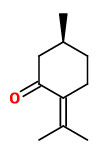 (-)-pulegone | 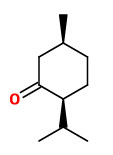 (-)-isomenthone | 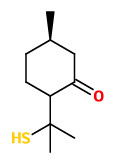 (1S)-8-mercapto- p-menthane-3-one | 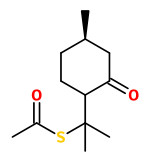 (1S)-8-acetylthio- p-menthane-3-one | 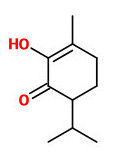 diosphenol | 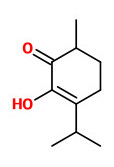 ϕ-diosphenol |
„The chemical composition of three different buchu essential oils which were derived from Agathosma betulina, A. crenulata and an A betulina x crenulata hybrid respectively (fam. Rutaceae) was investigated by means of chromatographic and spectroscopic methods. Approximately 40 compounds, all known, were detected. A. betulina was characterized by 31% of (iso)menthone, 41% (ϕ)-diosphenol and 3% of the olfactory important cis- and trans-8-mercapto-p-menthane-3-ones. The A. crenulata oil contained very high quantities of pulegone (54%) besides considerable quantities of trans-8-acetylthio-p-menthan-3-one (7%). The hybrid showed, apart from a very high concentration of (iso)menthone (55%), an intermediate composition.“
[Chemical Composition of the Essential Oils of Agathosma betulina, A. crenulata and an A. betulina x crenulata Hybrid (Buchu). Maarten A. Posthumus, Teris A. van Beek, Norman F. Collins & Earle H. Graven, Journal of Essential Oil Research Volume 8, Issue 3, 1996, 223-228]
„The essential oils of Agathosma betulina, A. crenulata and their hybrids were analyzed to determine whether the taxa could be distinguished by their monoterpene chemistry. Pulegone was found to be the key component for identification of the oils. A. betulina is identified by a pulegone content of 2.4% to 4.5%, the hybrids have 7.6% to 27.8% and A. crenulata has 31.6% to 73.2% pulegone. A. betulina and the hybrids have a higher content of 8-mercapto-p-menthan-3-one than 8-acetylthio-p-menthan-3-one while, the reverse is true for A. crenulata. The cis-8-mercapto-p-menthan-3-one content is higher than that of the trans- isomer for A. betulina and die hybrids, but the reverse is true for A. crenulata. Two A. betulina chemotypes were identified. The Diosphenol chemotype is characterized by high ϕ-diosphenol (>10%) and diosphenol (>12%), and low isomenthone (31%) and low ϕ-diosphenol…“
[Chemotaxonomy of commercial buchu species (Agathosma betulina and A. crenulata)., Collins, N.F., Graven, E.H., van Beek, T.A., Lelyveld, G.P., Journal of essential oil research, 8(3), 1996, 229-235]
„The indigenous Khoi-San people of the Western Cape have used Agathosma betulina, (better known as buchu) the focus of this study, for many years (Jodamus 2003). It has been well documented that the Khoi people used it for almost everything, from stomach ailments to moisturizing their skins. More recently, due to its commercialization, buchu has become so sought after that it is being treated as a protected species, is highly vulnerable to extinction, and is being cited as the abalone of the land. Internationally, there is a huge demand for it, since its major uses are in the pharmaceutical and food industry (Coetzee et al. 1999). Locally, it is being distilled by large companies at profitable rate. According to the Western Cape Nature Conservation Board (WCNCB), the buchu industry generates approximately R150 million per year. Until 1995, the only sources of buchu were wild plantations in the mountains of the Western Cape. This put the resource at risk.“
[SANBI Red List of South African Plants, 2017] http://redlist.sanbi.org/species.php?species=3359-22
The dried or fresh leaves of buchu are used as diuretic, diaphoretic and stimulant tonic. „Buchu is widely used and has a great reputation for treaing kidney and urinary tract diseases, for the symptomatic relief of rheumatism, ans also for ecternal application on wounds and bruises (in folk medicine as buchu vinegar). Buchu is an excellent tonic and is used to treat minor digestive disturbances. Buchu leaf and oil are important flavour components in herbal teas and food products.“
[Medicinal Plants of the World. Ben-Erik Van Wyk and Michael Wink, Pretoria 2004, 35]
The essential oil of A.betulina showed antimicrobial, anti-inflammatory (5-LOX) and cytotoxic activity.
[The biological activity and essential oil composition of 17 Agathosma (Rutaceae) species., Viljoen, A.M., Moolla, A., Van Vuuren, S.F., Van Zyl, R.L., Hüsnü, K., Baser, C., Trinder-Smith, T.H., The Journal of essential oil research, Vol.18, 2006, 2-16]
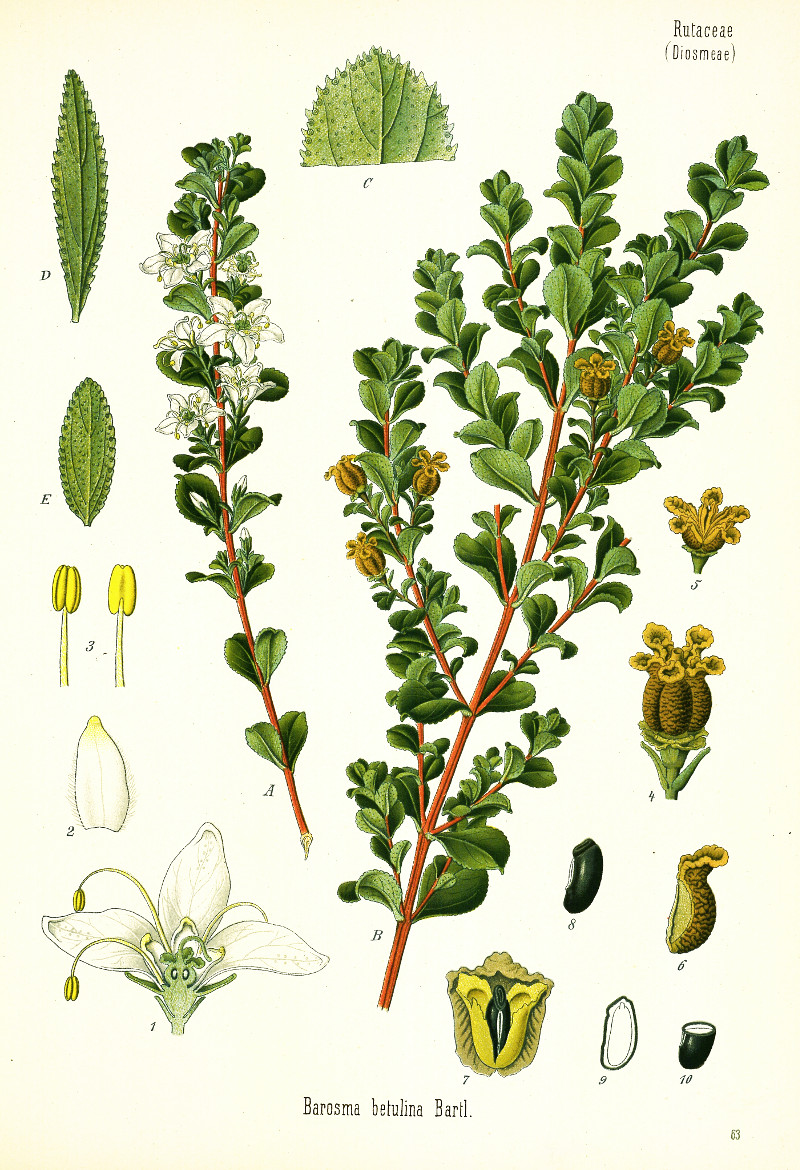
Köhler, F.E., Medizinal Pflanzen, vol.3, t.63 (1890)
http://plantgenera.org/species.php?id_species=27501
